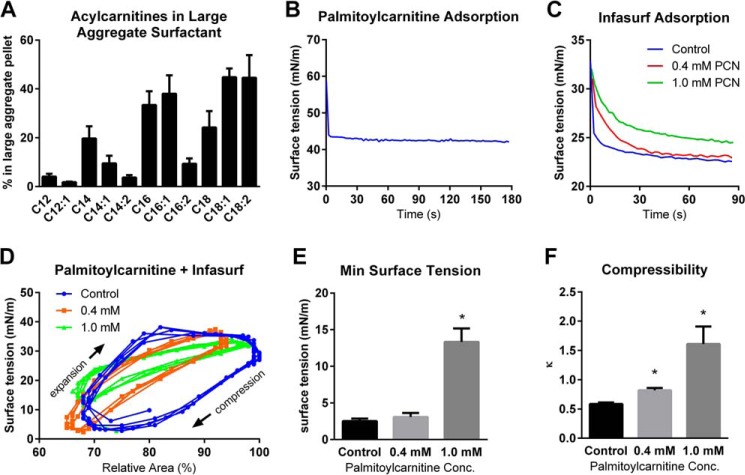FIGURE 3.
Long-chain acylcarnitines inhibit pulmonary surfactant. A, LCAD−/− mice (n = 6) were fasted overnight and lavaged with saline. The BALF was centrifuged to pellet large-aggregate surfactant. The large aggregate pellet and the supernatant were then analyzed for acylcarnitines by mass spectrometry, and the data used to calculate the % of the total amount of each species appearing in the pellet fraction. Shown are several relevant long-chain species. B, palmitoylcarnitine in solution (1 mg/ml) was observed to rapidly adsorb to the air-water interface and lower surface tension of the air-water interface in a constrained drop surfactometer. C, palmitoylcarnitine was added (0.4 or 1.0 mm) to Infasurf, a clinical formulation of pulmonary surfactant. The rate of adsorption to the air-water surface, revealed by surface tension decrease, was monitored as a function of time using the constrained drop surfactometer. D, infasurf with and without palmitoylcarnitine was allowed to reach surface equilibrium on the constrained drop surfactometer, and then was subjected to cycles of compression/expansion “breathing” using a motor-driven syringe to deflate/inflate the droplet. Surface tension (Y-axis) and surface area (X-axis) were measured and plotted. The data in these cycles were used to calculate (E) minimum surface tension reached during cycling, and (F) compressibility of the surfactant film. All bars depict means and standard deviations. *, p < 0.01, palmitoylcarnitine-treated versus control.

